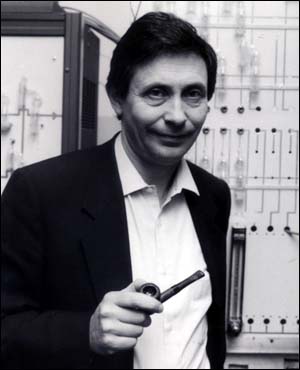The Israel Science Foundation has recently initiated the establishment of Centers of Excellence at the country's leading academic institutions. The goal of this program -- to provide recognition and support for the work of outstanding groups of local scientists engaged in research at the highest international level. Ten Centers have been created to date, six of them headed by Weizmann Institute professors. Interface describes the activities of three Weizmann-led Centers of Excellence
Solving one of the greatest mysteries of the universe, the origin of mass, is the ultimate goal of research conducted at the Center of Excellence devoted to particle physics and headed by Prof. Giora Mikenberg.
Thanks to their extensive experience in the design of particle detectors, the Center's physicists are key players in one of the most colossal experiments ever performed. Known as ATLAS, the experiment involves some 1,500 physicists from 30 countries intent on tracking down the elusive particle believed to endow matter with mass. The search will be conducted at the Geneva-based European Laboratory for Particle Physics (CERN), where the world's most powerful accelerator -- the Large Hadron Collider (LHC) -- is scheduled for completion in the year 2005.
Institute experts are currently constructing some 8,000 square meters of ultrathin high performance detectors for ATLAS in a special laboratory on the Rehovot campus. The superfast elements are the latest in a series of Weizmann contributions to the mammoth international effort underway at CERN. In 1983, Weizmann physicists developed and constructed detectors that were used to capture the decay products of yet another elementary particle at CERN's existing particle accelerator, the Large Electron Positron Collider.
The new ATLAS experiment will be the most ambitious attempt ever to nab the Higgs boson, the particle believed to be responsible for the fact that all other particles in the universe have mass. Its discovery is expected also to shed light on what happened in the first trillionth of a second after the Big Bang, the giant explosion in which the universe is thought to have been created. Failure to locate the particle may force scientists to modify the Standard Model, the accepted theory about the nature of matter founded on the premise that the Higgs boson does exist.
The quest to unravel the secrets of the universe has its down-to-earth aspects as well. Mikenberg recounts that scientists working in the 27-kilometer-long underground tunnel at CERN have had to take into account such prosaic factors as rain affecting the 100-meter-deep tunnel, the gravitational pull of the moon and even the passing of the TGV, or rapid train, several kilometers away. That's because the slightest interference can distort the ultraprecise measurements of elementary particle collisions.
"We can now calculate whether the Swiss train is on time by a factor of 10 to the minus 20th of a second," quips Mikenberg, one of the scientists who pinpointed the train as the cause of several fumbled experiments.
Mikenberg, a member of the Particle Physics Department, serves on the CERN committee supervising the LHC experimental program and heads one of the five Weizmann research groups in the new Center of Excellence. The other four are led by Profs. Ehud Duchovni and Uri Karshon, and Drs. Eilam Gross and Lorne Levinson, also members of the Particle Physics Department.
Researchers from Tel Aviv University and the Technion-Israel Institute of Technology also participate in the project.
